Трябва да сте влезли в
-
moreX
-
Компоненти
-
-
Category
-
Полупроводници
- Диоди
- Тиристори
- Електроизолирани модули
- Изправителни мостове
-
Транзистори
- Транзистори | GeneSiC
- Модули SiC MOSFET | Mitsubishi
- Модули SiC MOSFET | STARPOWER
- ABB SiC MOSFET модули
- IGBT модули | MITSUBISHI
- Транзисторни модули | MITSUBISHI
- MOSFET модули | MITSUBISHI
- Транзисторни модули | ABB
- IGBT модули | POWEREX
- IGBT модули | INFINEON (EUPEC)
- Полупроводникови елементи от силициев карбид
- Go to the subcategory
- Драйвeри
- Силови блокове
- Go to the subcategory
- Електрически преoбразователи
-
Пасивни компоненти (кондензатори, резистори, предпазители, филтри)
- Резистори
-
Предпазители
- Миниатюрни предпазители за електронни системи серия ABC и AGC
- Бързи тръбни предпазители
- Закъснителни вложки с характеристика GL/GG и AM
- Ултрабързи стопяеми вложки
- Бързи предпазители британски и американски стандарт
- Бързи предпазители европейски стандарт
- Тягови предпазители
- Високоволтни предпазителни вложки
- Go to the subcategory
-
Кондензатори
- Кондензатори за двигатели
- Електролитни кондензатори
- Кондензатори тип snubbers
- Кондензатори за мощност
- Кондензатори за DC (постояннотокови вериги)
- Кондензатори за компенсиране на мощност
- Високоволтови кондензатори
- Кондензатори за индукционно нагряване
- Кондензатори за съхранение на импулси и енергия
- DC LINK кондензатори
- Кондензатори за AC/DC вериги
- Go to the subcategory
- Филтри EMI (против смущения)
- Суперкондензатори
-
Защита от пренапрежение
- Защита от пренапрежение за коаксиални приложения
- Защита от пренапрежение за системи за видеонаблюдение
- Защита от пренапрежение за захранващи кабели
- Ограничители за пренапрежение за LED
- Ограничители за пренапрежение за фотоволтаици
- Защита на системата за претегляне
- Защита от пренапрежение за Fieldbus
- Go to the subcategory
- Go to the subcategory
-
Релета и контактори
- Теория- релета и контактори
- Полупроводникови релета АС 3-фазни
- Релета полупроводникови DC
- Регулатори, управляващи системи и аксесоари
- Системи за мек старт и реверсивни контактори
- Електромеханични релета
- Контактори
- Ротационни превключватели
-
Полупроводникови релета АС 1-фазни
- Полупроводникови релета AC еднофазни серия 1 | D2425 | D2450
- Полупроводникови релета AC еднофазни серия CWA I CWD
- Полупроводникови релета AC еднофазни серия CMRA I CMRD
- Полупроводникови релета АС ендофазни серия PS
- Полупроводникови релета AC двойни и четворни серия D24 D, TD24 Q, H12D48 D
- 1-фазни полупроводникови релета серия gn
- Полупроводникови релета АС серия ckr
- Релета AC еднофазни на шина DIN серия ERDA и ERAA
- Еднофазни AC релета за ток 150А
- Двойни полупроводникови релета, интегрирани с радиатор за DIN шина
- Go to the subcategory
- Полупроводникови релета АС 1-фазни, за печатни платки
- Интрфейс релета
- Go to the subcategory
- Индукционни елементи
- Радиатори, Bаристори, Tермични защити
- Вентилатори
- Климатизация, Оборудване за електрически шкафове, Охладители
-
Батерии, зарядни устройства, буферни захранвания и инвертори
- Батерии, зарядни устройства - теоретично описание
- Литиево-йонни батерии. Персонализирани батерии. Система за управление на батерията (BMS)
- Батерии
- Зарядни устройства и аксесоари за батерии
- UPS резервно захранване и буферни захранвания
- Преобразуватели и аксесоари за фотоволтаици
- Енергиен запас
- Горивни клетки
- Литиево-йонни батерии
- Go to the subcategory
-
Автоматика
- Futaba Drone Parts
- Крайни изключватели, Микроизключватели
- Датчици, Преобразователи
- Пирометри
- Броячи, Времеви релета, Панелни измервателни прибори
- Промишленни защитни устройства
- Светлинна и звукова сигнализация
- Термокамера
- Екрани LED
- Управляваща апаратура
-
Регистратори
- Регистратор на температура със запис на лента и цифров показател - AL3000
- Микропроцесорни регистратори с екран LCD серия KR2000
- Регистратор KR5000
- Измервател със функция за регистриране на влажност и температура HN-CH
- Експлоатационни материали за регистратори
- Компактен графичен регистратор 71VR1
- Регистратор KR 3000
- Регистратор РС серия R1M
- Регистратори РС серия R2M
- Регистратор РС - 12 изолирани входа– RZMS
- Регистратор PC, USB, 12 изолирани входа – RZUS
- Go to the subcategory
- Go to the subcategory
-
Проводници, Кабел литцендрат, Кабелни канали, Меки връзки
- Проводници
- Кабел литцендрат
-
Кабели за специални приложения
- Компенсиращи и удължаващи проводници
- Проводници за термодвойки
- Съединителни проводници за РТ датчици
- Многожилни проводници темп. -60C до +1400C
- SILICOUL проводници средно напрежение
- Запалителни проводници
- Нагревателни проводници
- Едножилни проводници темп. -60C до +450C
- Проводници за ЖП приложения
- Нагревателни проводници в Ех изпълнение
- Go to the subcategory
- Кабелни канали
-
Плетени кабели
- Плоски плетени кабели
- Кръгли плетени кабели
- Много гъвкави плетени кабели - плоски
- Много гъвкави плетени кабели - кръгли
- Медни цилиндрични плетени кабели
- Медни цилиндрични плетени кабели и канали/кожуси
- Гъвкави заземяващи ленти
- Плетени проводници от оцинкована и неръждясваща стомана
- Медни изолирани плетени проводници PCV -температура до 85 градуsа по C
- Плоски плетени алуминиеви проводници
- Комплект за подсъединение - плетени проводници и тръбички
- Go to the subcategory
- Оборудване за тяга
- Кабелни накрайници
- Изолирани еластични шини
- Многослойни еластични шини
- Системи за провеждане на кабели (шлауфи)
- Кабелни канали / маркучи
- Go to the subcategory
- View all categories
-
Полупроводници
-
-
- Suppliers
-
Applications
- AC и DC задвижвания (инвертори)
- CNC машинни инструменти
- Energy bank
- HVAC автоматизация
- Двигатели и трансформатори
- Заваръчни машини и заваръчни машини
- Захранващи (UPS) и токоизправителни системи
- Измерване и регулиране на температурата
- Измерване и регулиране на температурата
- Индукционно отопление
- Индустриална автоматизация
- Индустриална автоматизация
- Индустриални защитни устройства
- Компоненти за потенциално експлозивна атмосфера (EX)
- Машини за сушене и обработка на дървесина
- Машини за термоформоване на пластмаси
- Минно дело, металургия и основаване
- Оборудване за разпределителни, контролни и телекомуникационни шкафове
- Печат
- Трамвайна и железопътна тяга
-
Инсталация
-
-
Индуктори
-
-
Индукционни устройства
-
-
https://www.dacpol.eu/pl/naprawy-i-modernizacje
-
-
Обслужване
-
- Contact
- Zobacz wszystkie kategorie
Humidity sensors - principle of operation, installation

Humidity is the presence of water in the air. The amount of water vapour in the air can affect human comfort as well as many industrial production processes. The presence of water vapour also affects various physical, chemical and biological processes.
Humidity sensors work by detecting changes that alter electrical currents or temperature in the air. There are three basic types of humidity sensors: capacitive, resistive, and thermal (thermally conductive). All three types monitor small changes in the atmosphere to calculate the humidity of the air.
A capacitive humidity sensor measures relative humidity by placing a thin strip of metal oxide between two electrodes. The electrical capacitance of the metal oxide changes with the relative humidity of the atmosphere. The main application areas are meteorological stations, electrical engineering industries, HVAC automation.
Resistive humidity sensors use ions in salts to measure the electrical impedance of atoms. As the humidity changes, the resistance of the electrodes on either side of the salt medium changes.
Thermal sensors conduct an electrical current depending on the humidity of the surrounding air. They are most commonly made of two sensors in one housing - one sensor is encased in dry nitrogen while the other measures the humidity of the air. The difference between the two indicates the humidity.
Application of humidity sensors
Capacitive relative humidity sensors are used in many applications to measure humidity in printers, HVAC systems, fax machines, automobiles, weather stations, refrigerators, food processing, etc.
Because of their small size and low cost, resistive sensors are used in domestic, residential and industrial applications.
Thermally conductive sensors are typically used in dryers, food dehydration, pharmaceutical facilities, etc.
Below are examples and application of humidity sensors:
Domestic: Controlling and sensing humidity in offices and homes is important because higher humidity can affect mood e.g. change in blood flow, feeling uncomfortable. Other application areas include indoor plant farms, cooking, etc.
Industrial: Industries such as chemical, refining, metallurgy where furnaces are used need humidity sensors because high humidity reduces the amount of oxygen present in the air, which can significantly affect the productivity of these industries. Other industries such as paper, textile, food, etc. also require humidity control.
Agriculture: Drip irrigation is a crop growing technique that requires precise humidity. Soil moisture also plays an important role in plant growth. When growing plants indoors or in greenhouses, moisture level testing is essential for their proper growth.
Electronics and Semiconductors: A number of electronic devices are parameterized with respect to the range of humidity in which they will operate properly. Generally, the value is between 10 and 50% humidity. Semiconductor manufacturing facilities must also maintain very precise humidity and temperature values, as even a minute difference can have a huge impact on production.
Medical: Medical equipment such as sterilizers, incubators, ventilators, etc. require humidity control. Humidity sensors are also used in pharmaceutical facilities.
Issues that humidity can cause in industry
In many factories, steam and humidity are daily byproducts of various industrial processes; if not properly maintained, excessive humidity levels can cause a host of problems, resulting in delays, safety hazards and additional expenses.
Even reliable air conditioning may not be enough to achieve the required relative humidity, as the percentage of relative humidity increases as the room temperature decreases.
Different manufacturing facilities have different humidity problems, depending on the specific equipment and products used. Particularly in machine shops, excess moisture can cause condensation, fog or mold buildup that can damage products, equipment and even the facility structure itself.
A safety hazard
Condensation can form on store floors creating a dangerous, slippery environment. Electrical and electronic equipment can also quickly become saturated, posing serious safety and quality risks. Electrical products exposed to high levels of moisture often corrode and reduce insulation resistance, which can eventually cause short circuits.
The problem with labelling
The surface to which the label is applied must not be wet. Condensation may occur on it due to the temperature difference between the packaging and the air in the room. The air must have a relative humidity of about 40-45% for the surface of the packaging to remain dry and for the label to stick. We put labels on fruit, bottles, anything that needs some labelling.
Disrupting drying cycles
Products that require specific drying cycles are also susceptible to moisture problems; if humidity levels are too high, drying times can be severely delayed, resulting in production shutdowns, increased energy consumption, and lost productivity.
Dry food packaging plants are an example. When exposed to excessive humidity, the quality of food products is compromised, which can threaten the health and well-being of consumers. In addition, many insects and insects seek humid conditions, thriving in areas with humidity levels between 70-80%.
Humidity sensors do their job
In order for your manufacturing facility to run at peak efficiency, it is essential to maintain proper humidity levels. Taking care of air quality and humidity levels should be one of the key aspects that every industrial business strives for. Using the highest quality humidity sensors will allow you to precisely control humidity levels in your premises, which will result in increased productivity, as well as ensuring the safety of machinery and equipment, and the comfort of employees or users of a given room.
Related products
Related posts
 Now available – DC/DC converters from PREMIUM
Now available – DC/DC converters from PREMIUM
 New release in DACPOL lighting for lathes – Kira covers
New release in DACPOL lighting for lathes – Kira covers




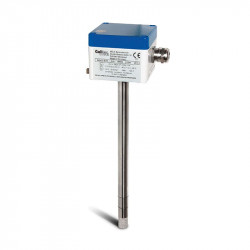
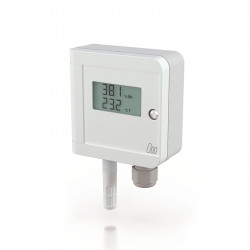
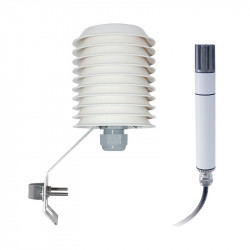
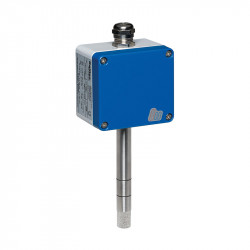
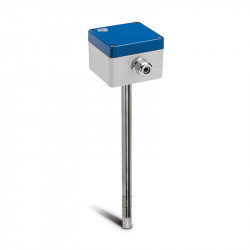
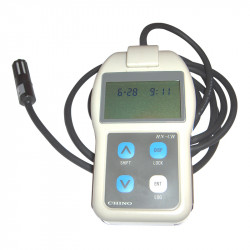
Leave a comment